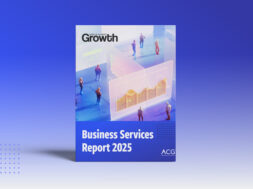Choice-of-Entity Considerations After Federal Tax Cuts
Here are the major considerations when making a choice-of-entity decision in the wake of the Tax Cuts and Jobs Act.

This article is sponsored by Pepper Hamilton LLP.
This story originally appeared in the March/April 2020 print edition of Middle Market Growth magazine. Read the full issue in the archive.
Choosing the appropriate type of entity is a multifaceted analysis—one that was impacted by the Tax Cuts and Jobs Act of 2017, or TCJA. Here are the major considerations when making a choice-of-entity decision in the wake of that legislation:
Tax Rates
For C corporations, the new tax law reduced the federal corporate tax rate from 35% to 21%. Dividends received by noncorporate taxpayers are still taxed at a maximum rate of 20% (plus an additional 3.8% for taxpayers subject to the net investment income tax), resulting in an effective federal tax rate for noncorporate shareholders of 39.8%.
For flow-through entities, income is not taxed at the entity level and is instead included by the owners on their tax returns. The TCJA reduced the top noncorporate tax rate on ordinary income from 39.6% to 37% and provides a 20% deduction for certain business income. This 20% deduction reduces the effective federal tax rate on flow-through income for noncorporate taxpayers from 37% to 29.6%. Individual partners may also be subject to self-employment taxes or the net investment income tax.
If a business plans to reinvest all after-tax proceeds and not make any distributions, a C corporation likely provides a greater opportunity for growth as the after-tax proceeds are generally higher than those of a flow-through entity. Conversely, if a business plans to distribute all of its income, a flow-through entity is likely more efficient.
Income and Losses
In a C corporation, income and losses remain at the entity level. Net operating losses may no longer be carried back but may be carried forward indefinitely. However, the losses may only offset up to 80% of the corporate income. This effectively implements a 20% minimum tax in light of the TCJA’s repeal of the corporate alternative minimum tax.
Meanwhile, income and losses of a flowthrough entity flow through to its owners. The losses may be available to offset income from other businesses, subject to certain limitations.
If owners can utilize losses to offset income, it may be more efficient to operate as a flowthrough entity. However, if the owners do not expect to be able to use the losses, it may be better to trap them in a C corporation so they remain available to offset future income.
Exit Planning
Many buyers prefer asset acquisitions over stock acquisitions because of the buyer’s ability to obtain a step-up in the tax basis of the assets and immediately deduct 100% of the cost of certain assets.
An asset sale from a C corporation results in two levels of tax, while an asset sale from a flow-through entity results in a single level. Accordingly, C corporation shareholders often prefer to sell stock. Thus, a flow-through structure that minimizes the impact on the seller with respect to an asset sale may be preferred to maximize the purchase price.
The ideal choice of entity depends on the entity’s business needs, including what the business does and the type of assets held, who the owners are, the type of income or loss that is anticipated and the expectations in an exit event.

Morgan Klinzing is an associate in the Tax and Estates Practice Group of Pepper Hamilton LLP. Effective April 1, 2020, Pepper Hamilton will combine with Troutman Sanders to become Troutman Pepper Hamilton Sanders LLP (Troutman Pepper).


